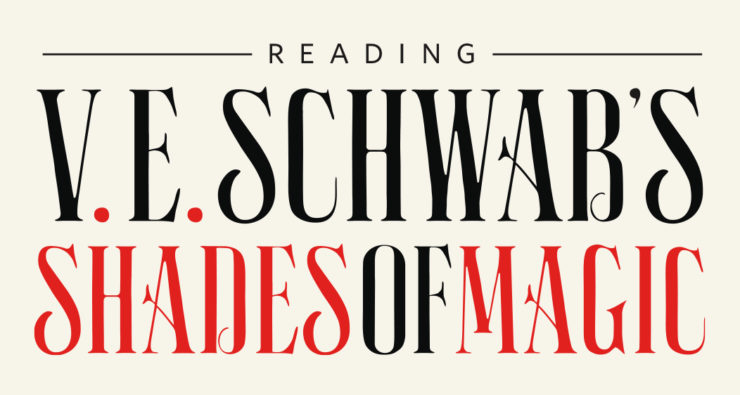Having reached the halfway point in A Darker Shade of Magic, it’s time to reconnoiter and talk about what the magic system in Schwab’s universe seems to convey about the timelines and centers of magical power. We’ve got the four Londons, of course, but the world is vast and magic is all over the place (or was, at any rate). Where could the story take us?
Here are a few of my thoughts so far…
Other Londons
So, real talk. Are there only four worlds, period? Could there be more? Don’t there have to be? My brain is always changing things into science fantasy rather than pure fantasy, so the problem with multiple worlds stacked on top of each other is that my assumption goes right to alternate universes—of which there should be a near infinite amount. How many Londons are there? Were all these worlds affected by the closed doors between worlds? Why don’t they have contact with each other? There are a lot of possibilities, and plenty of other colors that Kell can use to label them.
Egypt
I said it on the last section of the reread, and I can’t really stop thinking about it; if there are natural parts of the world that are special magic sources of energy (like the Thames in each of the Londons), you cannot convince me that the Nile isn’t one of those sources. Myths from Ancient Egypt already frame the river as a source of power and life, so magic is pretty much a given. In fact, if we could just go back in time to Ancient Egypt and see how magic affected its history, that would be great.
North America
How does the development of the “New World” change when you add magic to the mix? In Grey London, presumably things work out about the same, but what might the world look like on Red London’s side of things? Is there still colonial expansion and imperialism, or does the red monarchy basically stay put? It’s possible that Native Americans might never have been displaced by colonists in that world, and North America would be a very different place than the one we see today.
Buy the Book


Vengeful
The Arctic Circle(ish)
Many natural wonders seem like an ideal place for magic to bloom, but nothing screams it perhaps so much as the image of the aurora borealis. Everyone would have to get pretty cold to go see it, but what sort of magic do you imagine the sky would offer? The people who live north of England would have those lights dazzling overhead, and connection to such a source is probably incredibly unique to the world.
Polynesia
We know that brands, tattoos, and symbols pertain to magical power, and that the denizens of White London have a habit of marking their skins in effort to bind magic to them. Knowing this adds another dimension to the concept of tribal tattoos, and it seems likely that they would have additional magical purposes alongside their cultural significance. You can’t help wonder how different parts of the world interact with the same magic, and sea-faring Polynesian peoples are bound to have a completely different way of interacting with such power.
Mount Chimborazo
My assumption—as suggested with the inclusion of the aurora borealis—is that water isn’t the only magical “source.” Perhaps other aspects on the fire-earth-water-air spectrum are sources as well. And what better place to have a magical source than the tallest mountain on the planet? Okay, so Everest has the height count, but in terms of actual distance from the center of the Earth, Chimborazo in Ecuador actually takes that title. (This is because the earth isn’t perfectly spherical, so being closer to the equator changes the game.) You can’t tell me that’s not a magical source.
The Ganges River
The Thames and the Nile are prime contenders, but the Ganges River has been a sacred place for centuries. This also brings up one of my central questions about the series—how does religion and belief fit into this universe? The Ganges is an important site for Hindus and the Nile was intrinsic to Egyptian religion as well. There’s been no discussion of religion, but you have to expect they intermingled at some point, particularly in Grey London. We don’t know was much about potential religious practices in the other worlds, but that must effect how people think of and react to magic. Maybe we’ll hear more about that later….
These were the first ideas that came to me, but there are so many more! I’m fascinated to see where the series goes next.
Emmet Asher-Perrin would also like to visit all of these places, so make of that what you will. You can bug her/him on Twitter and Tumblr, and read more of her/his work here and elsewhere.










